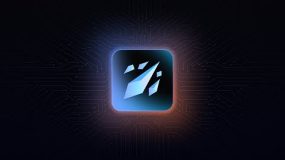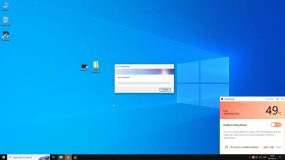Is It Really “Unwanted” If It Solves the Problem?
Some antivirus programs flag driver updater tools – like Outbyte Driver Updater – as potentially unwanted applications (PUAs). The logic usually goes: “Well, Windows already installs drivers, so third-party tools aren’t necessary.”
But here’s the thing: we tested that idea. And the results say otherwise.
If you’ve ever looked up how to update driver in Windows when the system can’t detect your device – or wondered what you might need to do if Windows Update doesn’t find a driver for your hardware — this article lays it out with real evidence and real results.
Along the way, we’ll also touch on why calling this kind of software “unwanted” might not be fair after all.
Let’s Talk About the PUA Label
So, what’s the issue?
Driver updaters often get flagged as PUAs – not because they’re dangerous, but because they’re seen as unnecessary or duplicating Windows features. But we believe that label doesn’t always reflect how these tools actually work in the real world.
For example:
- DU doesn’t trick users
- It doesn’t lock core features behind unexpected paywalls
- It doesn’t hide what it’s doing
And thanks to a short 2-day trial, it even allows users to update drivers without needing to sign up or enter payment info. Just install the tool and get started – no payment required, no registration barriers.
So why is it still “potentially unwanted”? Maybe it’s time to look at the results instead.
A Real Case: When Windows Gave Up – and DU Didn’t
Let’s say you plug in a NETGEAR WNA1100 USB Wi-Fi adapter. Windows detects it, kind of – it appears in Device Manager under “Other Devices” with a warning icon.
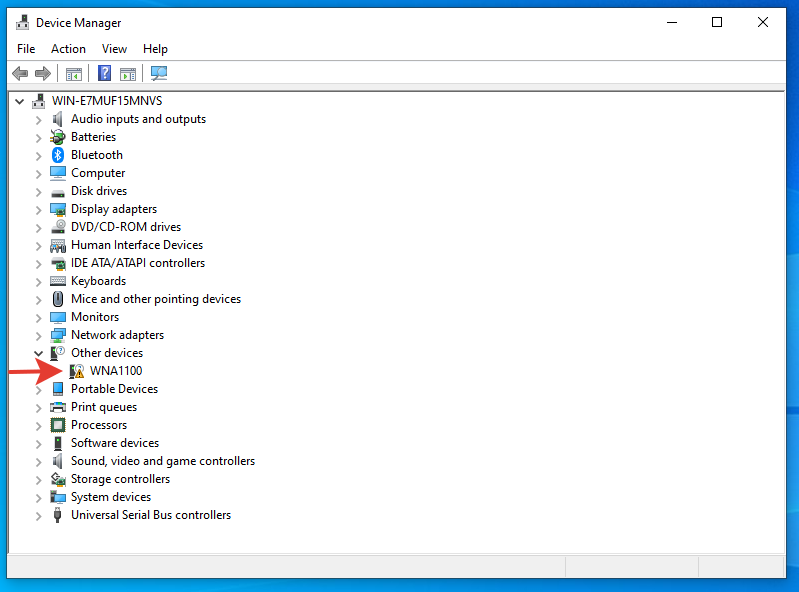
You open properties: The drivers for this device are not installed. (Code 28)
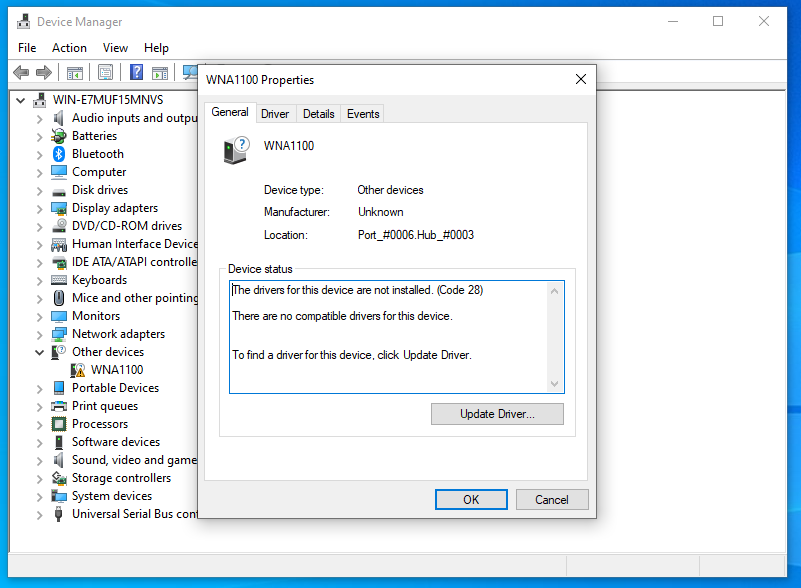
You try to update the driver via Windows Update.
It tries. It fails:
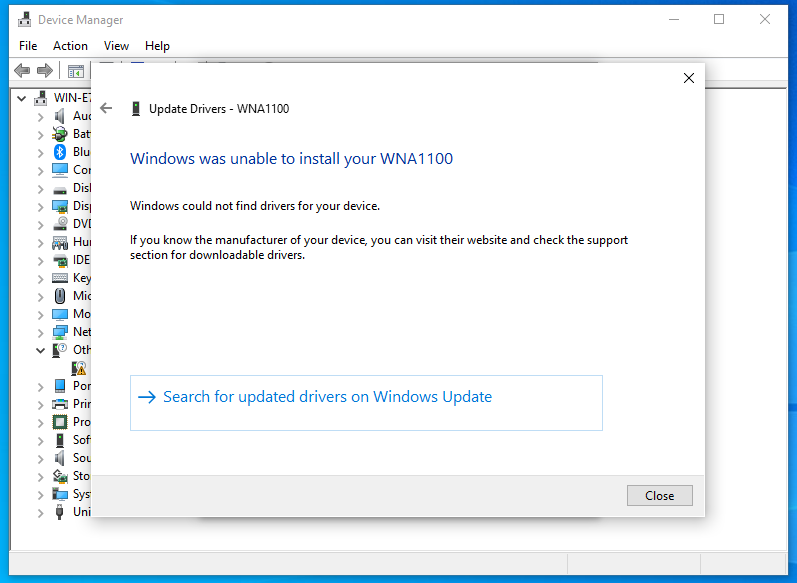
That’s it. You’re stuck.
Then you open Driver Updater. It immediately recognizes the device, suggests a compatible driver, and installs it.
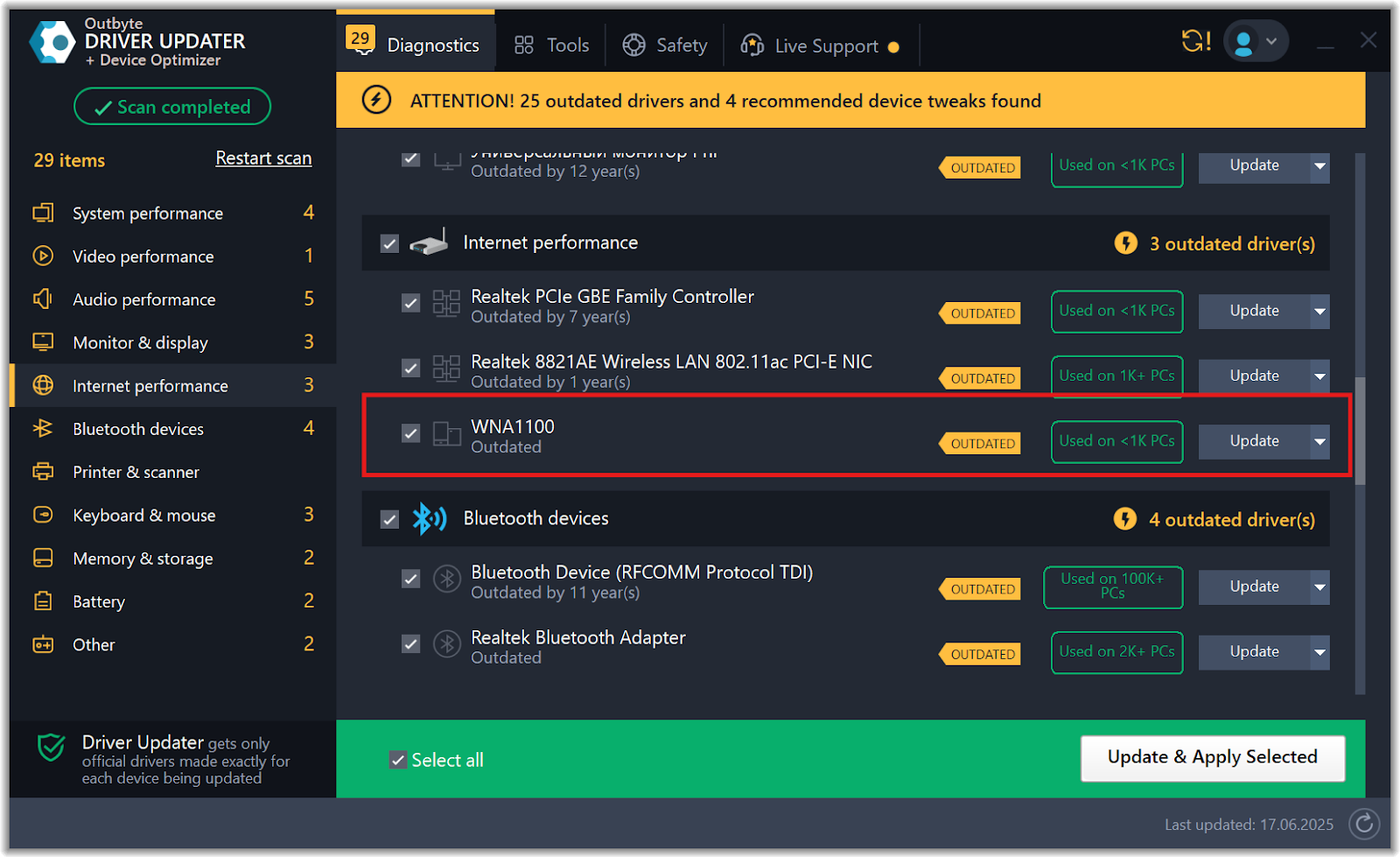
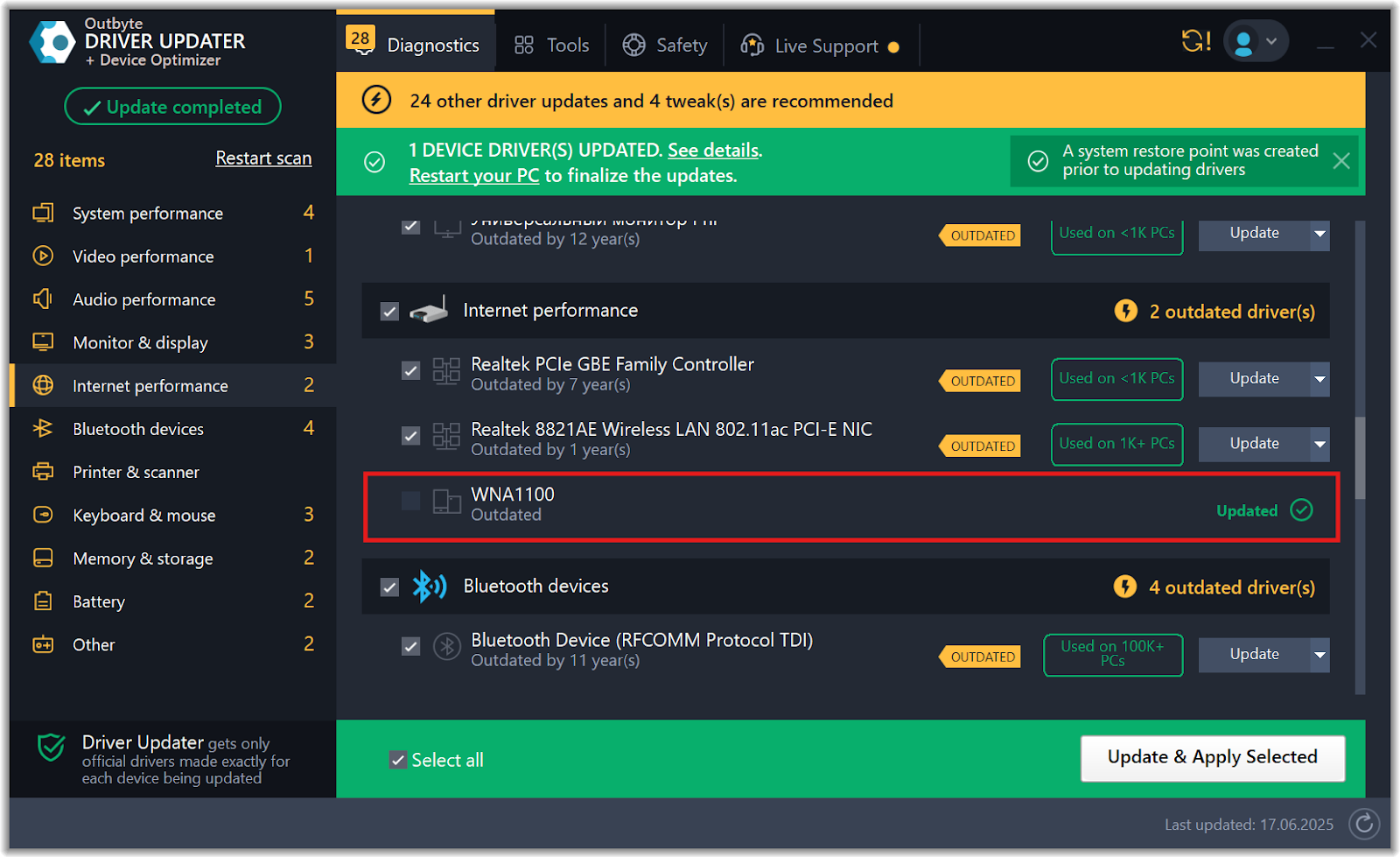
Suddenly, the device appears under “Network Adapters”

and the status reads:
“This device is working properly.”
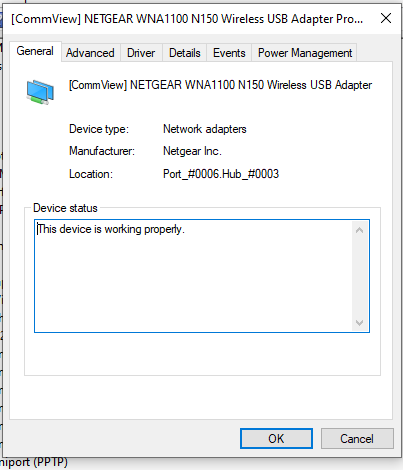
No guessing. No hassle. It just worked.
What AV Tools Might Be Missing
It’s Not About Replacing Windows
Outbyte DU doesn’t try to take over Windows functionality. It steps in when Windows can’t deliver – especially with older devices, OEM components, or custom hardware setups.
Instead of interfering with system updates, DU works alongside them. There’s no conflict with the OS – just simple, targeted help where it’s needed.
So why the PUA label?
PUA flags are usually based on broad, automated rules – like “this tool duplicates OS features” or “offers functionality already included in Windows.” But when that functionality doesn’t work as expected, shouldn’t a reliable workaround be considered helpful – not unwanted?
Tools like DU solve real problems. And in this case, it clearly did what Windows couldn’t.
Conclusion: Let’s Call It What It Is – Useful
Not all tools are built the same – and we’re not claiming every driver updater is perfect. But when it comes to transparency, usability, and results, DU shows exactly what the best driver updaters should look like.
When Windows 11 fails to install missing drivers, tools like DU are not just helpful – they’re often necessary.
This isn’t about claiming all driver updaters are perfect. It’s about showing that some – like Outbyte Driver Updater – genuinely help users when Windows falls short.
We invite anyone reviewing this – especially antivirus vendors – to focus on what really matters: user experience, functionality, and transparency.
Because if a tool:
- Solves a real issue
- Doesn’t mislead the user
- Works without unnecessary barriers
…then maybe it’s not “unwanted” at all.
FAQs
How to update driver in Windows 11 when it doesn’t show up?
Outbyte Driver Updater simplifies the entire process – scan, detect, and install the missing driver in just a few clicks.
Does Outbyte DU require payment just to work?
No – it includes a 2-day trial that lets users update drivers one by one, without registration or payment details.
Isn’t Windows supposed to handle drivers already?
In theory, yes. But in real life? Not always. This article is one example of how things can go wrong.
Is DU safe to use?
Yes. It’s digitally signed, verified, and creates a system restore point before making any changes.
Why do antivirus tools flag it anyway?
Mostly due to broad rules about “duplicating OS features” – not based on whether the tool is actually misleading or harmful.



